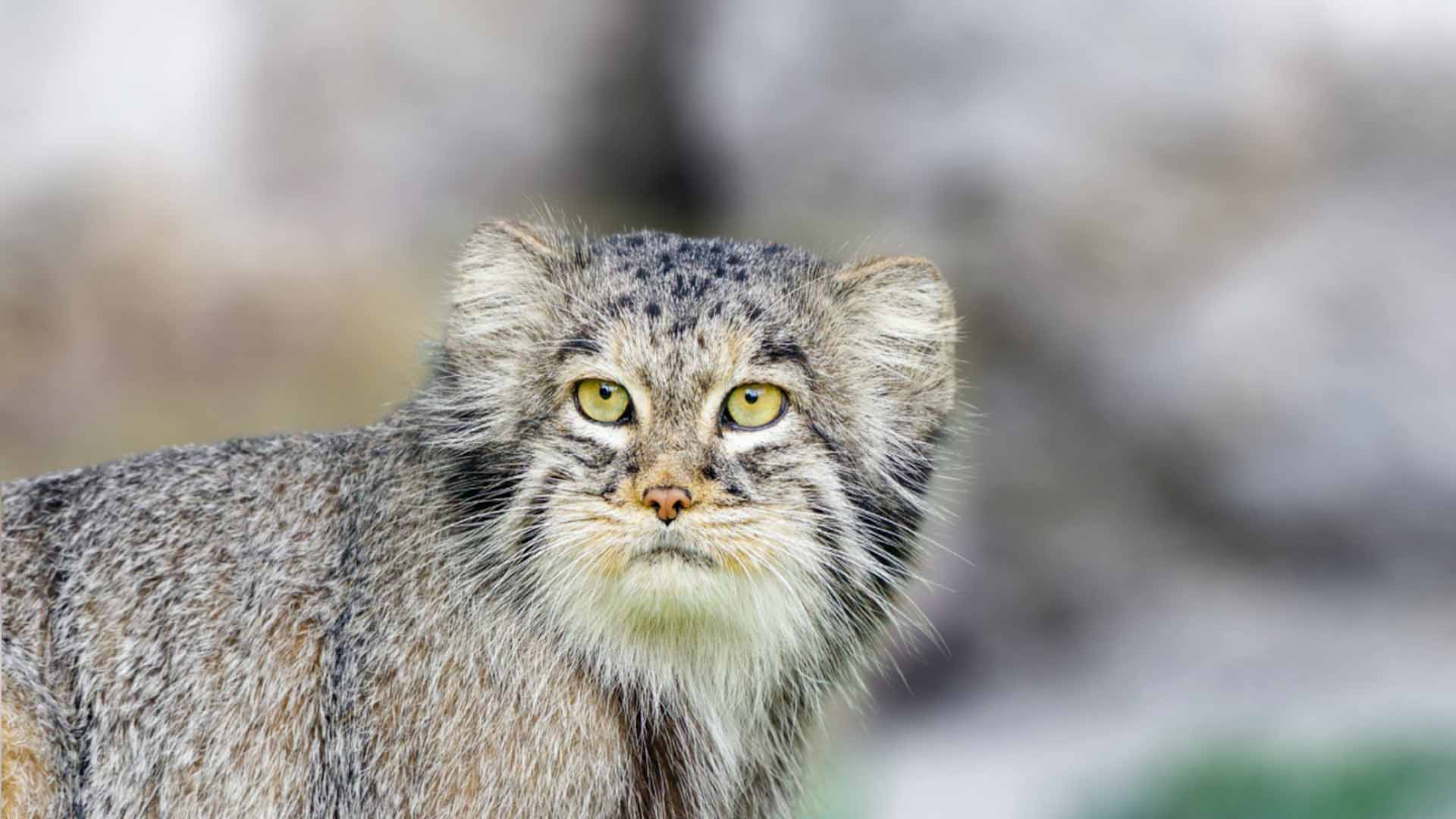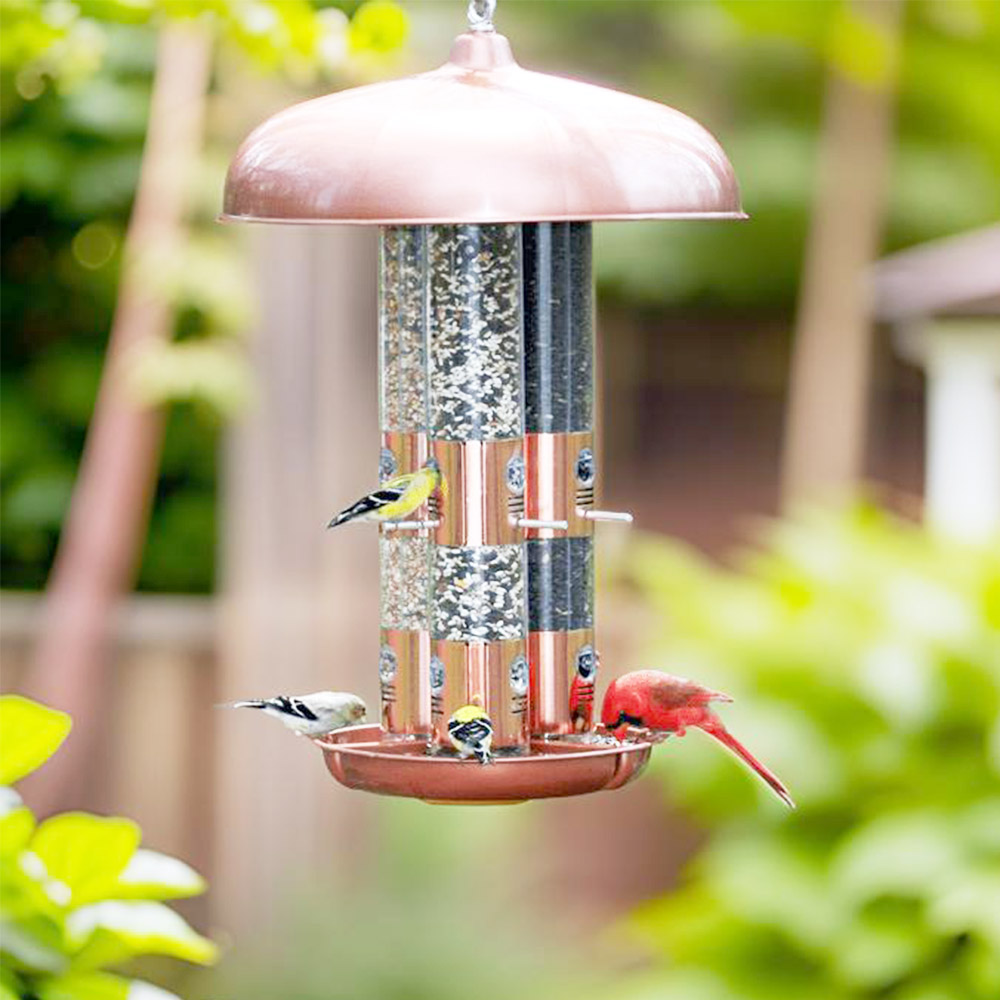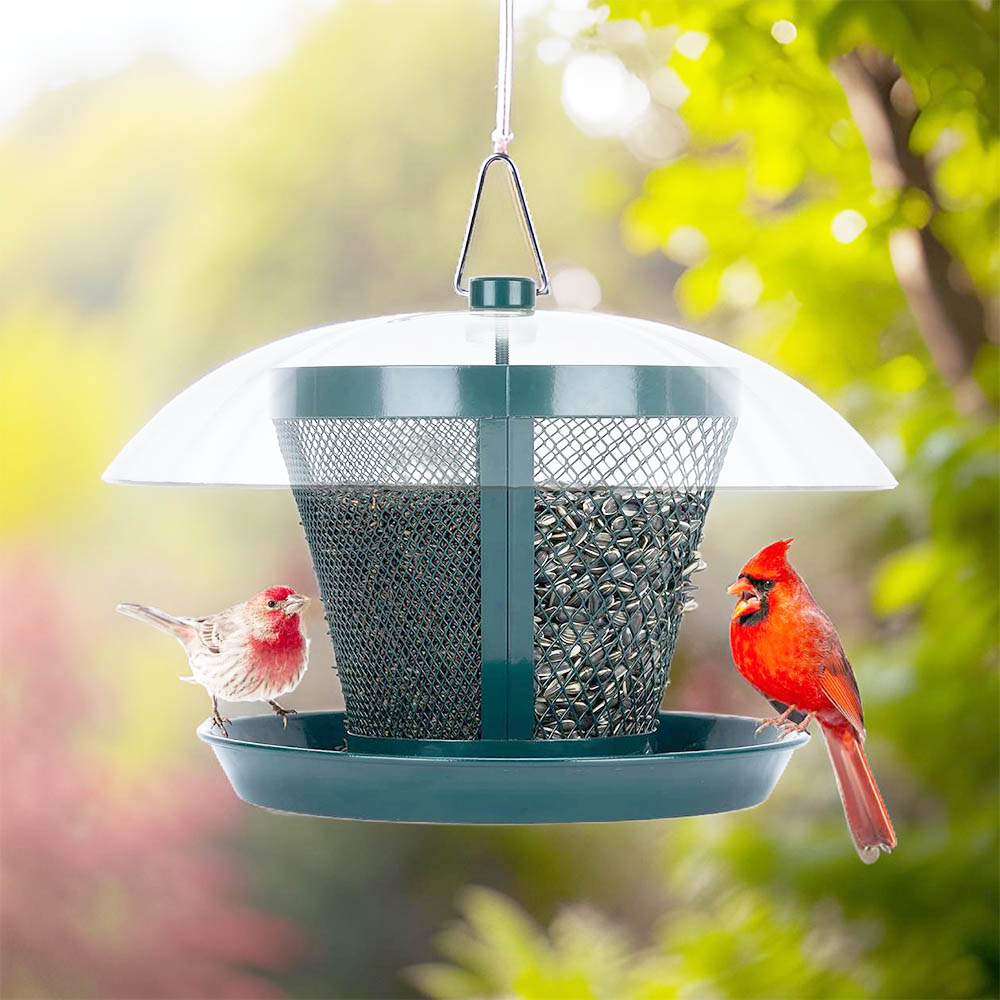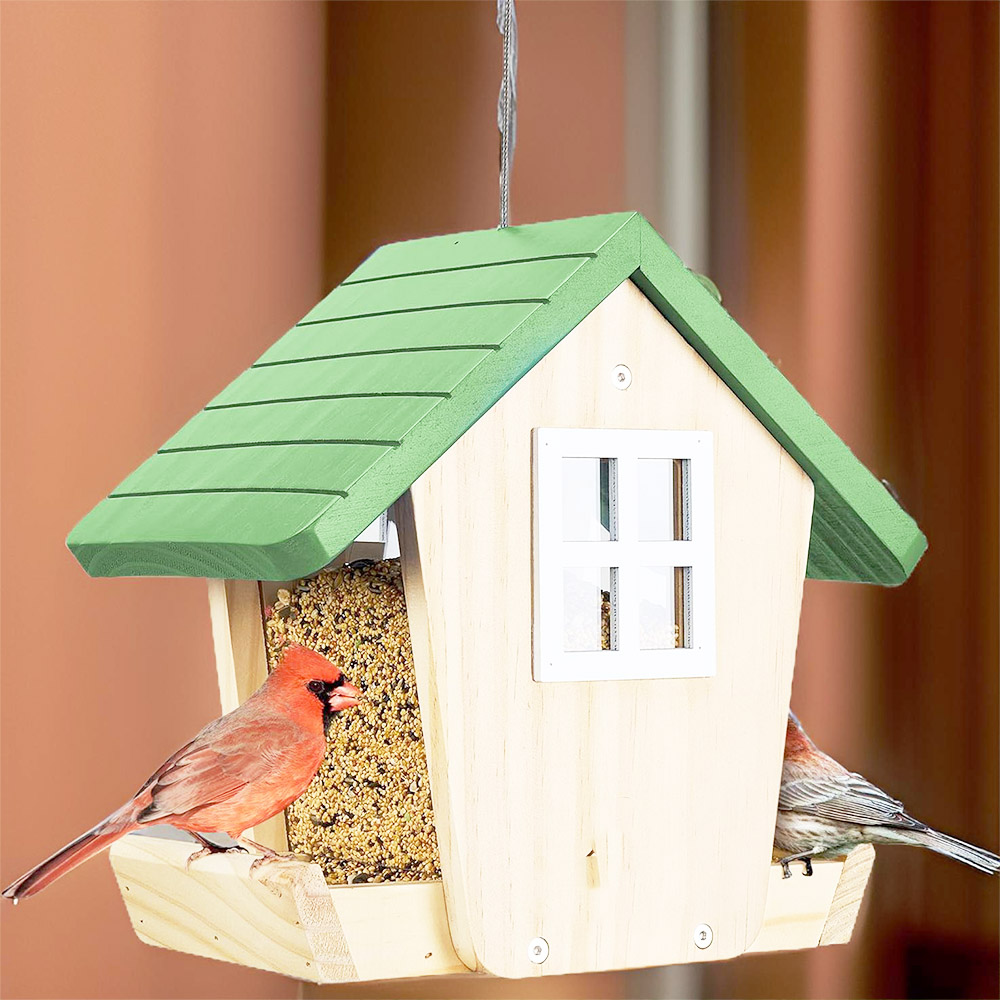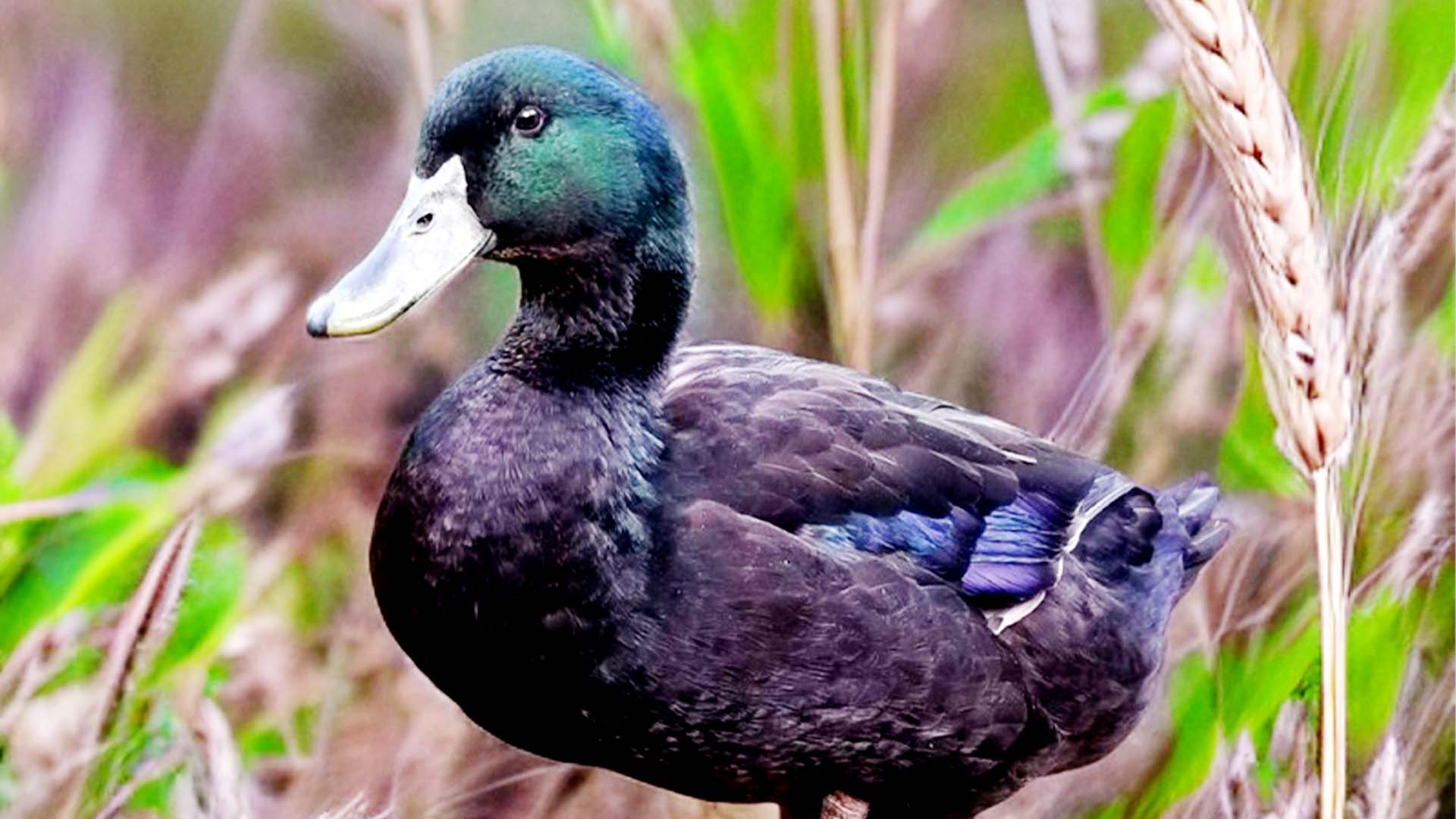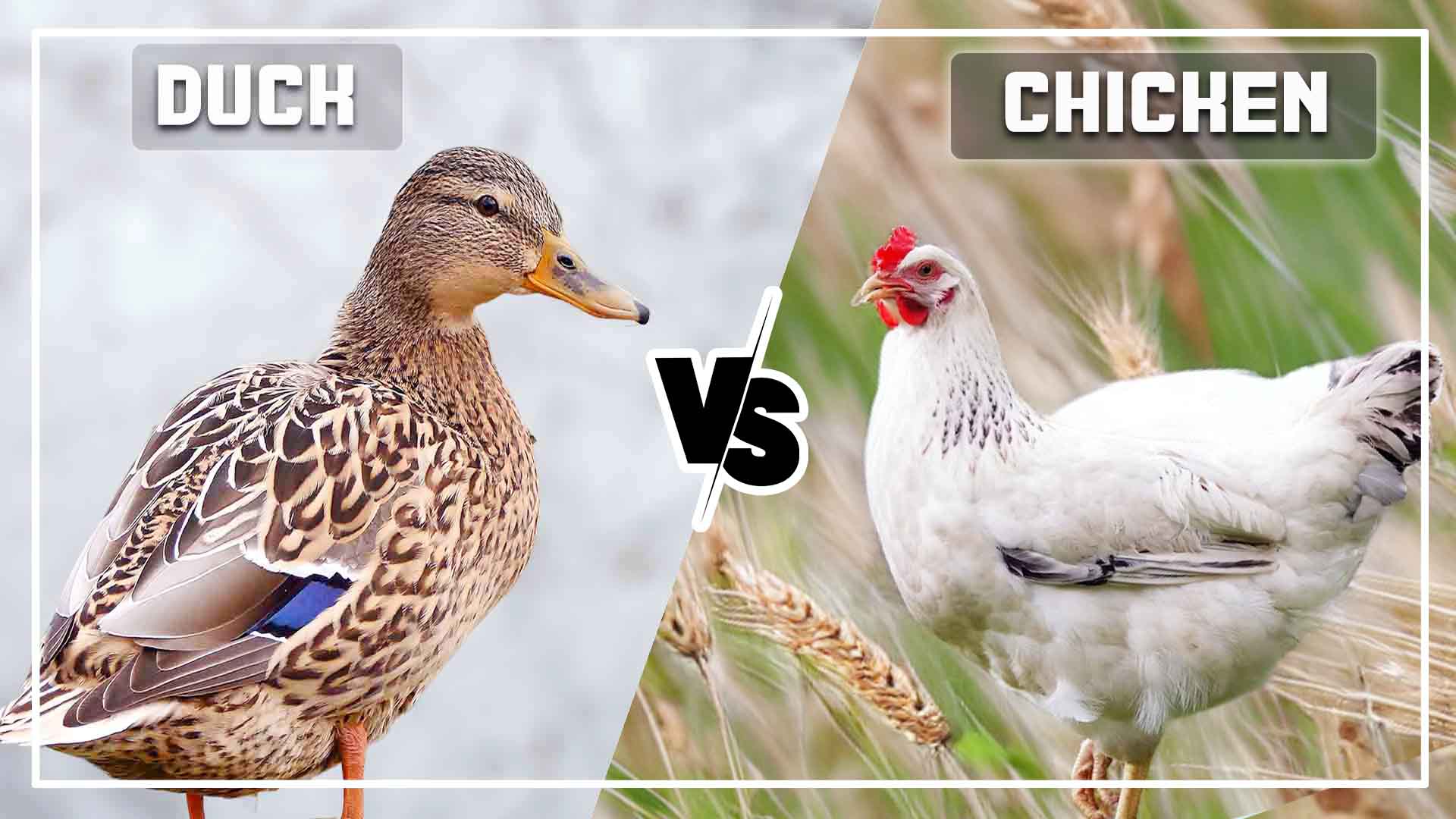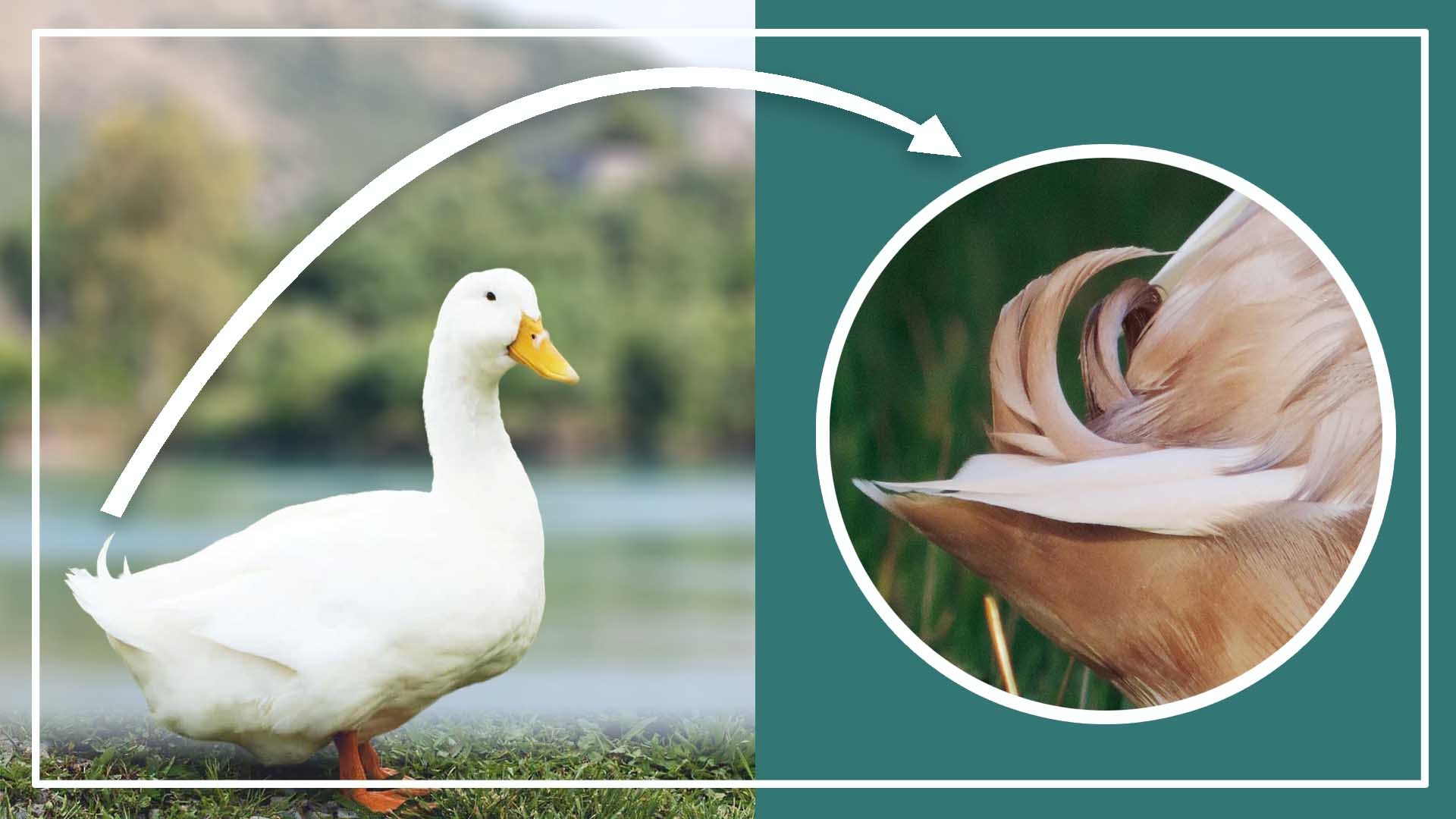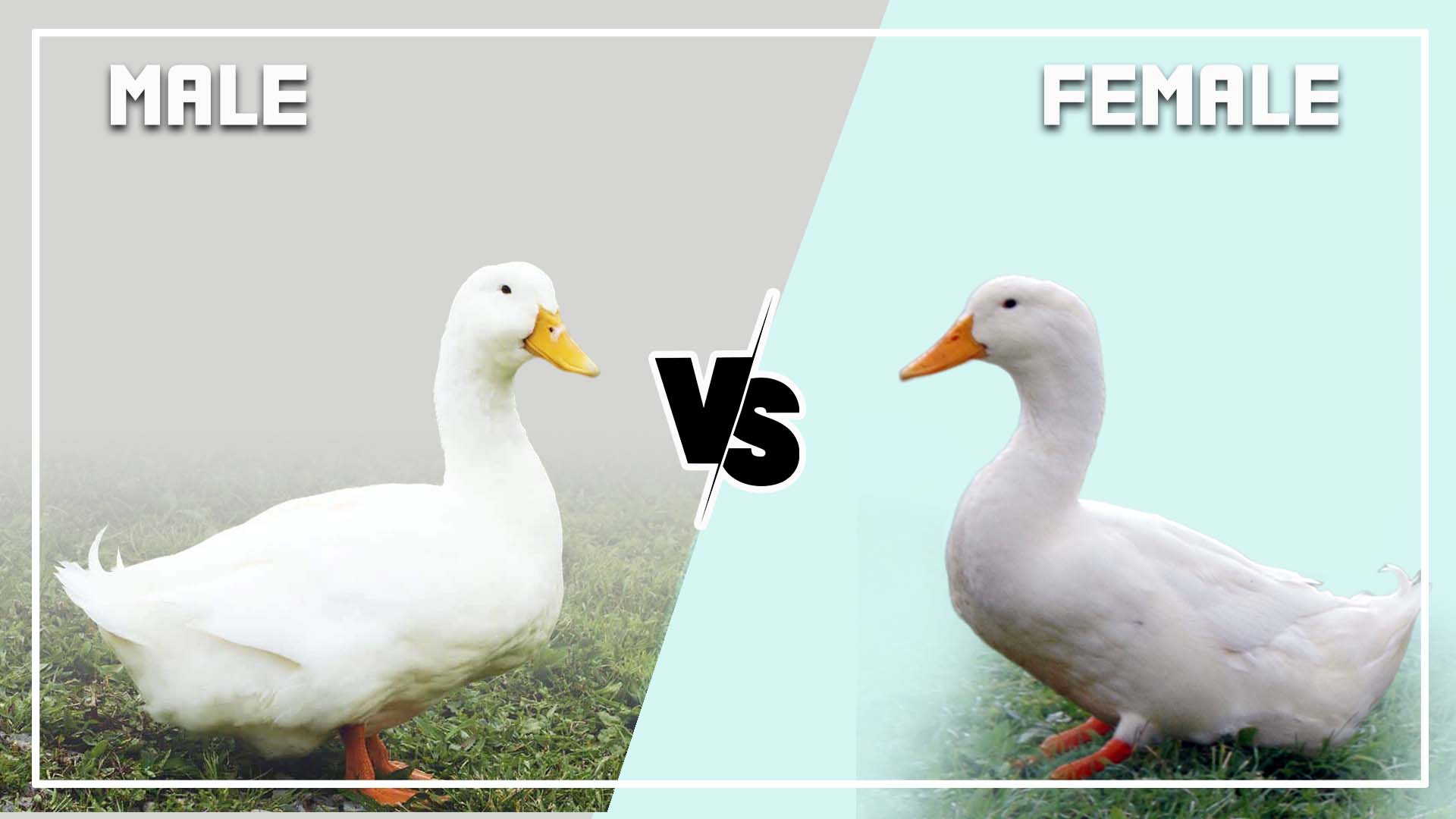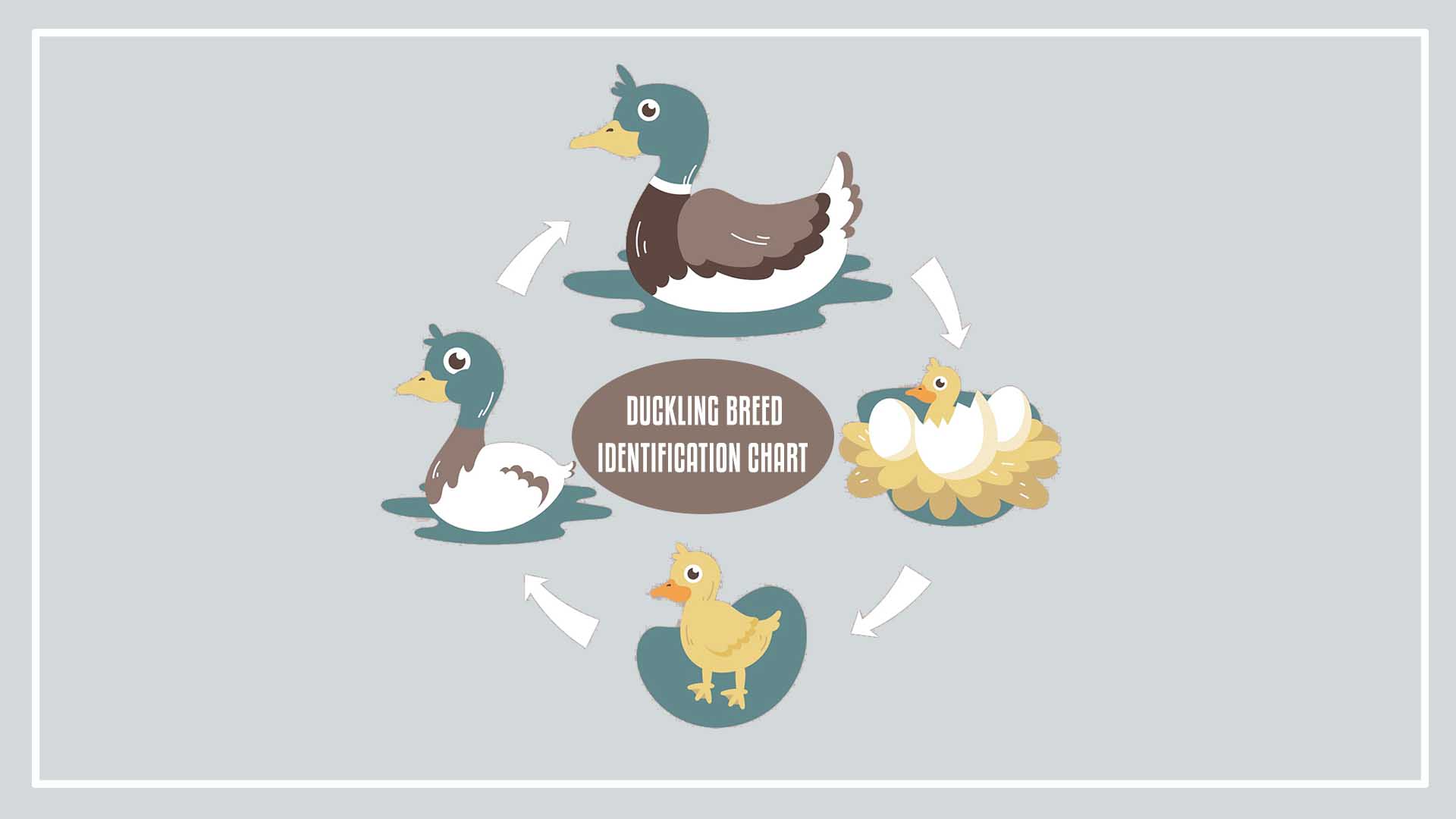The Cayuga Duck, a unique and captivating breed, has captured the hearts of duck enthusiasts with its distinctive appearance and valuable contributions. Originating in the United States, this breed has earned its place in both practical farming and ornamental displays.
Here we will discuss male and female Cayuga Ducks size, coloration, egg-laying capabilities, and intriguing facts that make them a cherished part of the poultry world.
Cayuga Duck Physical Characteristics
Here we will discuss the various physical characteristics that define these ducks, ranging from size and weight to coloration, body structure, plumage, and more.
Size and Weight
Male and female Cayuga Ducks exhibit slight differences in size and weight, which can help in distinguishing between the sexes.
Male Cayuga Ducks, also known as drakes, generally have a larger size compared to their female counterparts. On average, adult male Cayuga Ducks can range in size from 20 to 24 inches in length and weigh approximately 6 to 8 pounds.
Female Cayuga Ducks, or hens, are slightly smaller than the males. They typically measure around 18 to 22 inches in length and weigh roughly 5 to 7 pounds.
Cayuga Duck Size Chart and Weight by Age
| Age | Male Size (inches) | Male Weight (pounds) | Female Size (inches) | Female Weight (pounds) |
| Juvenile | 6-8 | 0.5-1.5 | 6-8 | 0.5-1.5 |
| Adult | 20-24 | 6-8 | 18-22 | 5-7 |
Cayuga Duck Color
One of the most distinctive features of the Cayuga Duck is its unique coloration. Both male and female Cayuga Ducks have dark, iridescent feathers that appear black from a distance. However, when observed up close, these feathers reveal shades of green and purple, giving them a captivating shimmer.
Both male and female Cayuga Ducks share the same dark iridescent coloration, making it somewhat challenging to differentiate between the sexes based solely on color. The key difference between them lies in their physical size and sometimes their quack, which tends to be louder in males.
The skin of the Cayuga Duck can vary based on its age and genetic factors. Generally, the skin of Cayuga Ducks is dark, matching their overall coloration. However, it’s important to note that skin color might be less pronounced in younger ducks and could become darker as they mature.
Different Color Variations of Cayuga Ducks
While the classic dark iridescent color is synonymous with the Cayuga Duck, there have been some other color variations that have arisen through selective breeding and genetic factors:
Black Cayuga Duck: The standard Cayuga Duck coloration features black feathers with iridescent green and purple hues.
Blue Cayuga Duck: Blue Cayuga Ducks showcase a bluish tint in their feathers along with the typical iridescence.
Brown Cayuga Duck: Brown Cayuga Ducks, while less common, exhibit a brownish hue in their feathers. This coloration may be less intense in terms of iridescence.
Distinguishing between male and female black Cayuga Ducks follows the same size and behavioral patterns as their classic counterparts. Males are larger and sometimes exhibit more pronounced curled tail feathers, while females are generally smaller and might have a quieter quack.
Body Structure
Body Structure: The Cayuga Duck has a medium-sized, well-rounded body with a graceful posture. Their neck is moderately long and complements their overall body shape.
Plumage: The plumage of the Cayuga Duck is a hallmark feature. It’s characterized by dark, iridescent feathers that can appear black but reveal shades of green and purple upon closer inspection. The plumage may change slightly as the ducks age, but the iridescence remains a defining trait.
Feet and Legs: Cayuga Ducks have webbed feet, which make them excellent swimmers. The color of their legs can vary between shades of black or dark gray. The length of their legs is proportional to their body size, allowing them to navigate both land and water effectively.
Cayuga Ducks Life Cycle: From Hatching to Lifespan
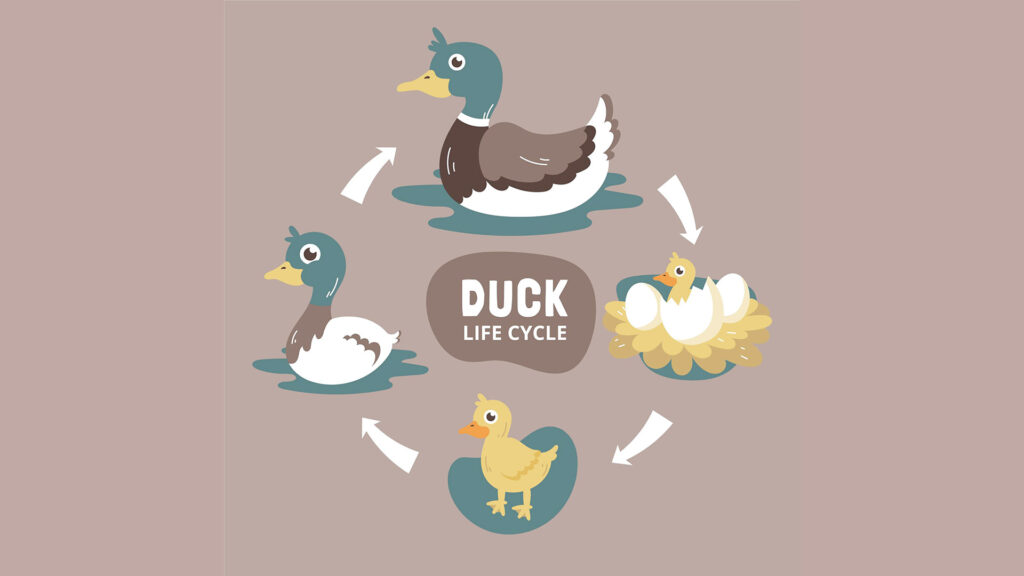
Cayuga Ducks, with their captivating appearance and unique characteristics, undergo a fascinating life cycle that encompasses hatching, growth, maturation, and a well-defined lifespan. In this article, we’ll explore each stage of the Cayuga Duck’s life journey.
Duck Eggs
The journey of a Cayuga Duck begins with the hatching of its eggs. Cayuga Duck eggs are typically incubated for about 28 to 35 days, depending on various factors such as temperature and humidity. During the incubation period, the eggs are carefully monitored to ensure optimal conditions for the growing embryos.
Once the eggs begin to hatch, tiny cracks appear on the eggshell, and the ducklings start to make peeping sounds. It’s crucial to maintain a controlled environment during this phase, as the ducklings are particularly vulnerable to temperature fluctuations and stress. Once hatched, the ducklings are usually kept in a warm and safe brooding area until they are strong enough to explore on their own.
Cayuga Duck Baby (Duckling) Stage
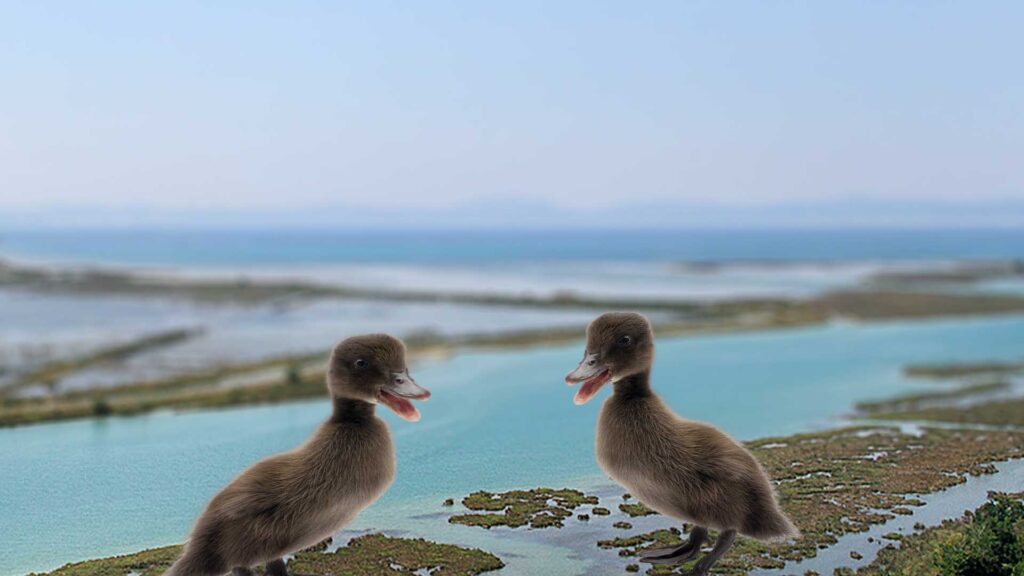
The ducklings, often referred to as “ducklings” or “ducklings,” enter the world covered in soft down feathers. They are precocial, which means they are relatively independent and can walk, swim, and feed themselves shortly after hatching. However, they still require care, protection, and warmth during their early days.
At this stage, ducklings need access to clean water for swimming and feeding. A shallow dish of water that allows them to submerge their bills and clean their eyes and nostrils is essential. Their diet primarily consists of starter duck feed and finely chopped greens. As they grow, they will gradually transition to a more varied diet that includes grains, insects, and aquatic vegetation.
Cayuga and Pekin Duck Mix
Crossbreeding between different duck breeds, such as the Cayuga and Pekin, can result in interesting mixed-breed offspring. The specific traits of the hybrid ducks can vary depending on the genetic contributions from each parent breed. For example, a Cayuga and Pekin duck mix might exhibit a combination of characteristics from both breeds, including coloration, size, and temperament.
Cayuga Duck Lifespan
The lifespan of Cayuga Ducks varies depending on several factors, including their living conditions, diet, and overall care. On average, Cayuga Ducks can live anywhere from 5 to 10 years. Proper care, a balanced diet, protection from predators, and a clean living environment can contribute to a longer and healthier life for these ducks
Cayuga Ducks: Male and Female Characteristics
Male and female Cayuga Ducks exhibit several differences that allow for easy identification.
Male Cayuga Ducks:
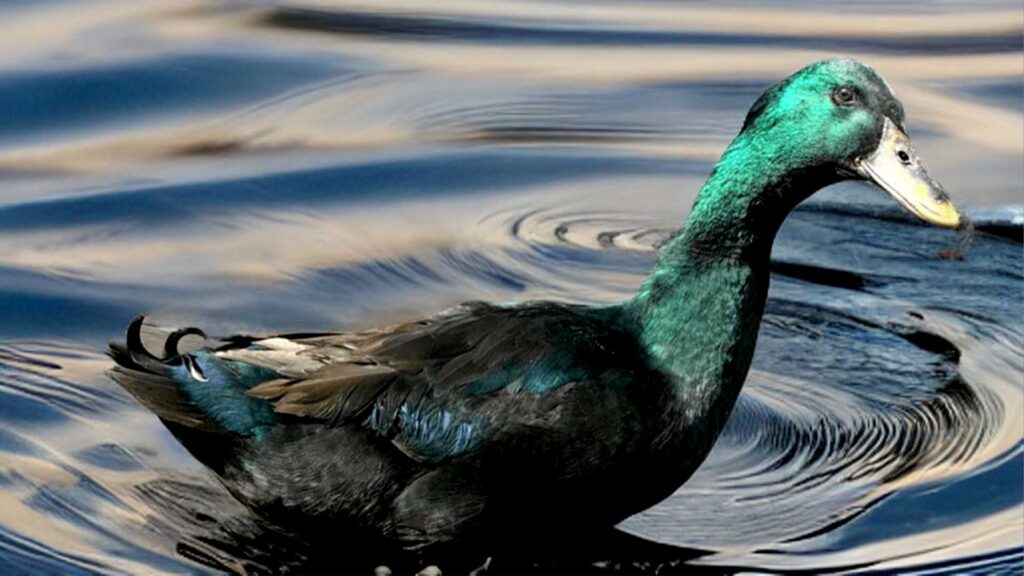
- Size: Generally larger than females, with a length of 20 to 24 inches and a weight of 6 to 8 pounds.
- Coloration: Like females, male Cayuga Ducks also have the characteristic iridescent dark feathers that appear black from a distance but reveal shades of green and purple up close.
- Behavior: Males tend to have a slightly more pronounced curl to their tail feathers. They may also exhibit more active and protective behaviors, especially during breeding season.
- Voice: Male Cayuga Ducks are known for their distinctive, raspy quacking sounds that are often louder and more frequent than the calls of females.
Female Cayuga Ducks:
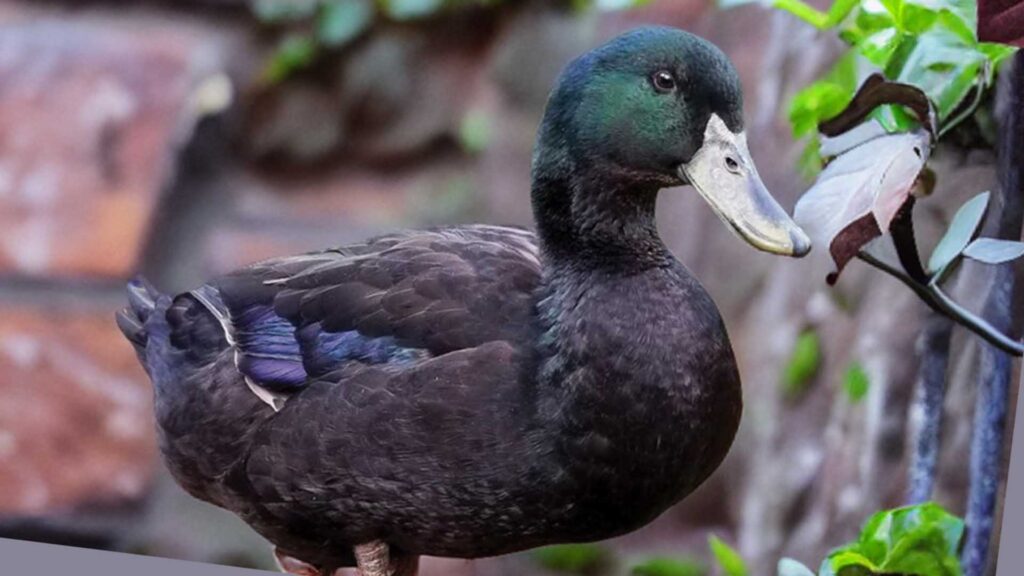
- Size: Slightly smaller than males, with a length of 18 to 22 inches and a weight of 5 to 7 pounds.
- Coloration: Like males, female Cayuga Ducks also have the same dark iridescent feathers that reflect green and purple hues.
- Behavior: Females are generally quieter than males and might have a softer quack. They also tend to be more focused on nesting and caring for their offspring.
- Voice: Female Cayuga Ducks emit a lower, softer quacking sound compared to the more pronounced calls of the males.
Differences between male and female Cayuga Ducks:
| Characteristic | Male Cayuga Duck | Female Cayuga Duck |
| Size | 20-24 inches, 6-8 pounds | 18-22 inches, 5-7 pounds |
| Coloration | Iridescent dark feathers | Iridescent dark feathers |
| Tail Feather Curl | More pronounced | Less pronounced |
| Behavior | Active, protective | Calm, nurturing |
| Voice | Louder, raspy quack | Softer, lower quack |
The male to female ratio among Cayuga Ducks can vary based on factors such as breeding conditions and genetics. Typically, a balanced ratio is maintained in domestic breeding environments to ensure healthy reproduction and social dynamics.
Cayuga Ducks communicate using a range of sounds that convey their emotions and needs. The sounds they make include:
- Quacking: The most distinct sound is the quacking. Males tend to have louder, raspy quacks, while females have softer, lower quacks.
- Chirping: Ducklings emit soft chirping sounds, especially when they’re seeking warmth, comfort, or attention.
- Hissing: When threatened or alarmed, adult Cayuga Ducks may hiss to warn potential predators.
Cayuga Ducks Diet: What Do Cayuga Ducks Eat?
Cayuga Ducks are omnivorous birds with a diverse diet that includes both plant matter and small aquatic creatures. Their natural feeding habits and preferences make them adaptable to various environments, from ponds and lakes to backyard settings. Here’s a breakdown of what Cayuga Ducks typically eat:
- Aquatic Plants and Vegetation:
- Cayuga Ducks feed on various aquatic plants, including algae, pondweed, duckweed, and other submerged and floating vegetation.
- They also consume grasses and other terrestrial plants found near the water’s edge.
- Insects and Invertebrates:
- Insects, insect larvae, and other aquatic invertebrates form an essential part of their diet.
- They forage for small insects, worms, snails, and crustaceans both in the water and on land.
- Seeds and Grains:
- Cayuga Ducks eat a variety of seeds and grains, both in the wild and when provided by humans.
- They may consume seeds from grasses, aquatic plants, and agricultural crops.
- Commercial Duck Feed:
- For domestic Cayuga Ducks, commercial duck feed is commonly provided to ensure a well-balanced and nutritious diet.
- Duck pellets or crumbles formulated specifically for ducks can provide essential nutrients.
- Kitchen Scraps and Greens:
- Cayuga Ducks can enjoy kitchen scraps like leftover vegetables, grains, and bread in moderation.
- Fresh greens, such as lettuce, kale, spinach, and duckweed, are beneficial for their overall health.
- Water Access:
- Access to clean and fresh water is crucial for Cayuga Ducks to aid in digestion and maintain overall health.
- Ducks need water for drinking, cleaning their bills, and facilitating the consumption of food.
Cayuga Duck Eggs
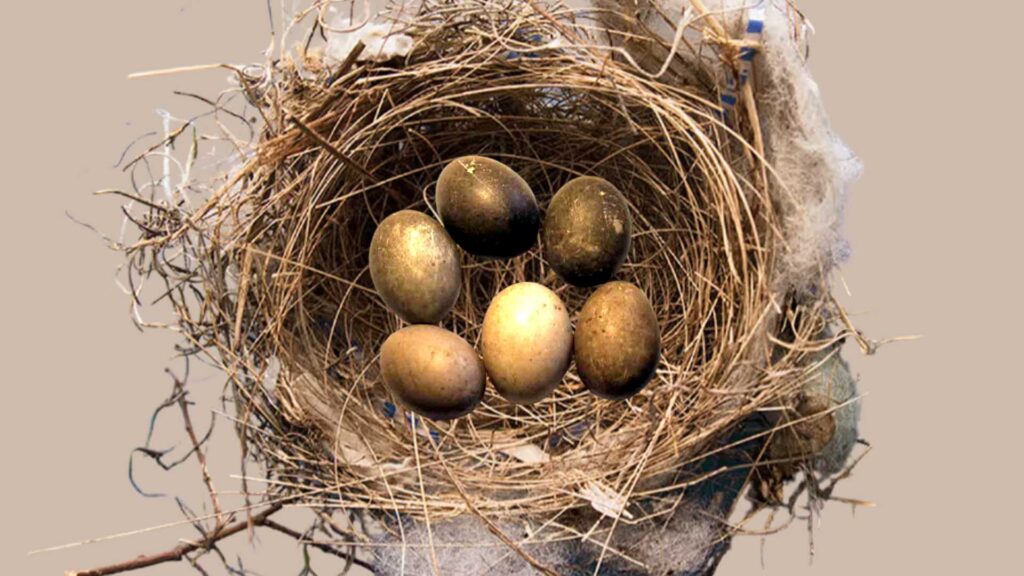
Cayuga Ducks are not only known for their unique appearance but also for their distinctive eggs. Here you can larn about Cayuga duck eggs, when they start laying, egg production, and more.
Cayuga Duck Egg Color
Cayuga duck eggs have a unique and beautiful color that sets them apart from the eggs of other duck breeds. Their eggs are known for their dark gray to black color, resembling the deep hues of their feathers. This dark coloration is a result of the same genetic factors that give Cayuga Ducks their iridescent plumage.
When Do Cayuga Ducks Start Laying Eggs?
Cayuga Ducks typically start laying eggs when they are around 5 to 7 months old. The exact timing can vary based on factors such as genetics, diet, and environmental conditions. Young ducks need time to mature before they begin their egg-laying journey.
Cayuga Duck Egg Production
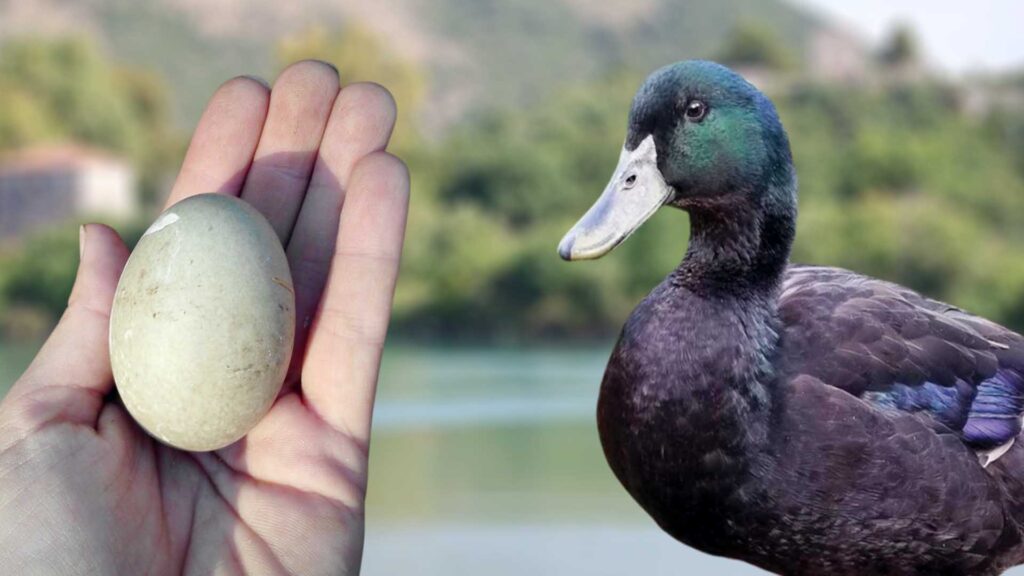
The egg production of Cayuga Ducks can vary from individual to individual and from season to season. Factors that influence egg production include:
- Breed: While Cayuga Ducks are known for being good layers, their egg production can differ from other prolific laying breeds.
- Age: Younger ducks usually lay fewer eggs in their first year of laying, and production increases as they mature.
- Diet and Nutrition: A well-balanced diet with appropriate nutrients can positively impact egg production. Ducks require sufficient calcium for producing strong eggshells.
- Season: Egg production often peaks during the spring and summer months when daylight hours are longer. Ducks might lay fewer eggs during the winter months.
How Many Eggs Do Cayuga Ducks Lay?
On average, a Cayuga Duck can lay around 100 to 150 eggs per year, but some ducks might lay even more. The egg-laying frequency can vary, with ducks typically laying an egg every 24 to 28 hours when they’re in their prime laying season.
When Do Cayuga Ducks Lay Eggs?
Cayuga Ducks tend to lay their eggs early in the morning, with most eggs being laid by mid-morning. Providing suitable nesting sites with comfortable and safe conditions can encourage consistent egg-laying behavior.
Cayuga Duck Eggs for Sale
Cayuga duck eggs are sought after by some consumers for their unique color and potential culinary uses. They can be used in cooking and baking, much like chicken eggs. However, availability might vary depending on the region and the preference of duck keepers.
Cayuga Ducks for Sale: Pricing and Availability
If you’re interested in adding Cayuga Ducks to your flock or starting a duck-raising venture, it’s important to understand the pricing, availability, and considerations associated with purchasing these ducks.
Buying Cayuga Ducks
Cayuga Ducks can be purchased from various sources, including hatcheries, breeders, and agricultural shows. When buying Cayuga Ducks, consider the following factors:
- Source: Research reputable hatcheries or breeders known for producing healthy and well-cared-for ducks.
- Health: Choose ducks that appear active, alert, and in good condition. It’s advisable to inquire about the ducks’ health history and any vaccinations they may have received.
- Age: Ducks are available at different ages, including ducklings, juveniles, and adults. The age of the duck can impact its adaptability and egg-laying potential.
- Color Variation: While the classic dark iridescent color is synonymous with Cayuga Ducks, there are also black and blue color variations that might be available.
Cayuga Duck Price by Age
| Age | Price Range per Duck |
| Duckling | $5 – $15 |
| Juvenile | $10 – $30 |
| Adult | $20 – $50 |
Note: Prices can vary widely based on factors such as location, breeder reputation, and the duck’s lineage.
Black Cayuga Ducks for Sale
Black Cayuga Ducks are a popular and classic variation of the breed. They have the signature iridescent dark feathers that shift between black, green, and purple hues. If you’re interested in purchasing black Cayuga Ducks, inquire with breeders or hatcheries that specialize in waterfowl.
Blue Cayuga Ducks for Sale
Blue Cayuga Ducks showcase a unique bluish tint in their feathers along with the characteristic iridescence. If you’re interested in the blue variation, research breeders or sources that offer blue Cayuga Ducks.
Cayuga Duck Care
Cayuga Ducks are known for their calm and friendly nature, which makes them suitable as pets and additions to backyard flocks. They are social birds that enjoy interacting with their human caregivers and fellow ducks. While individual personalities can vary, Cayuga Ducks generally exhibit docile behaviors, making them relatively easy to handle.
Cayuga Ducks can indeed be kept as pets, especially in settings that allow for proper care and space. Their calm demeanor and adaptability make them popular choices for families and individuals interested in raising ducks. It’s essential to provide them with suitable living conditions and the care they require for a fulfilling life.
Housing Requirements
Shelter: Cayuga Ducks require protection from the elements, especially during extreme weather conditions. A well-ventilated and insulated coop or shelter can provide them with a safe haven.
Protection: Ducks are vulnerable to predators, so it’s crucial to design their housing to deter predators like foxes, raccoons, and birds of prey.
Feeding and Nutrition
Dietary Needs: Cayuga Ducks are omnivores, meaning they eat a mix of plant matter and small aquatic creatures. Their diet should include commercial duck feed, grains, fresh vegetables, and access to clean water.
Balanced Diet: Ducks need a balanced diet rich in nutrients, including protein, vitamins, and minerals. Commercial duck feed formulated for their needs is an essential component.
Grooming and Maintenance
Bathing: Ducks enjoy bathing, which helps keep their feathers clean and healthy. Providing a shallow pool or container of water for them to splash around in is important.
Feather Care: Ducks molt, shedding old feathers and growing new ones. During molting, they might be more vulnerable to cold, so ensure they have proper shelter and warmth.
Health Check: Regularly monitor your ducks for signs of illness, and provide veterinary care as needed. Keep their living area clean to prevent health issues.
Social Interaction: Cayuga Ducks are social creatures. They thrive when they have company, so consider keeping them in pairs or groups to prevent loneliness.
Cayuga Duck Facts:
Cayuga Ducks, like many domestic duck breeds, have limited flying abilities. They are considered heavier ducks, and their body structure is more adapted for swimming and foraging than for sustained flight. While they might be capable of short bursts of flight, they are not known for their strong flying capabilities.
Are Cayuga Ducks Friendly?
Yes, Cayuga Ducks are generally friendly and docile birds. They can become accustomed to human presence and interaction if handled with care and treated kindly. Their social nature and adaptability contribute to their reputation as friendly ducks.
Are Cayuga Ducks Rare?
Cayuga Ducks are not considered extremely rare, but their unique coloration and captivating appearance do make them stand out among other duck breeds. They are recognized by poultry associations and are popular among duck enthusiasts, both for backyard flocks and exhibition purposes.
Cayuga Duck Breeds
The Cayuga Duck breed is known for its striking iridescent dark feathers that shift between black, green, and purple hues. While the classic Cayuga coloration is well-known, there are also variations within the breed:
- Black Cayuga Ducks: These are the most common and recognized Cayuga Ducks with the characteristic dark iridescent coloration.
- Blue Cayuga Ducks: Blue Cayuga Ducks exhibit a bluish tint in their feathers, adding to the visual appeal of the breed.
- Brown Cayuga Ducks: While less common, brown Cayuga Ducks showcase a brownish hue in their feathers. This variation might have less intense iridescence compared to the classic black coloration.
